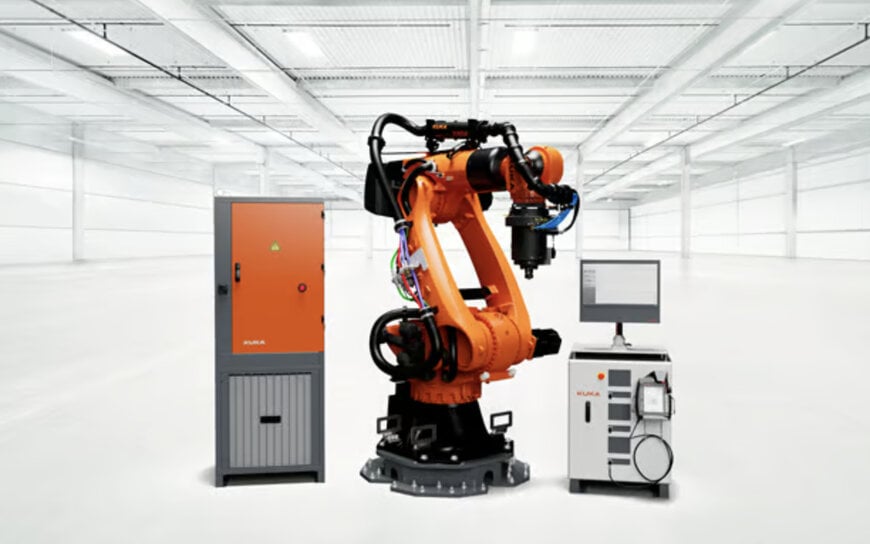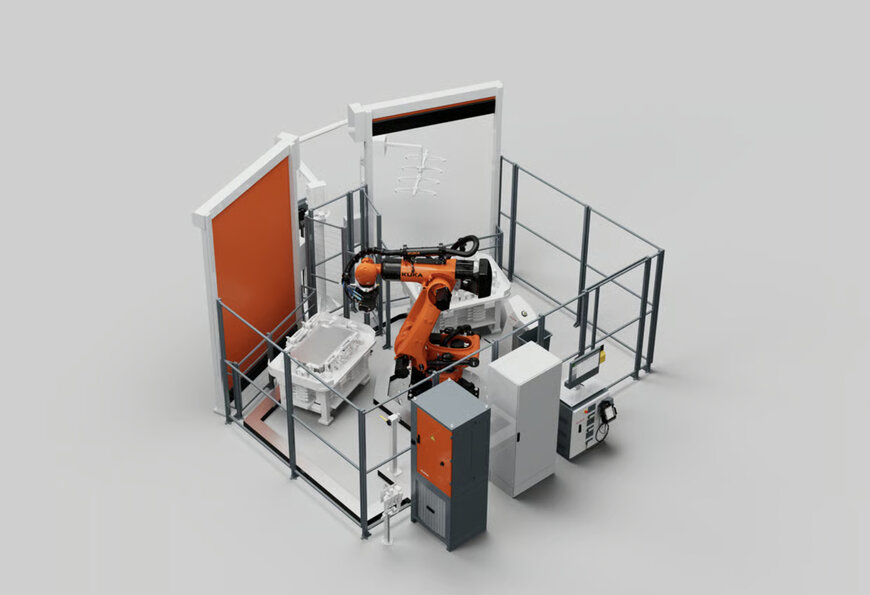www.ptreview.co.uk
10
'25
Written on Modified on
KUKA wins repeat order for e-mobility welding technology
KUKA supports sustainable mobility with 12 more friction welding cells, following last year’s major EV production order from a leading U.S. automotive manufacturer.
www.kuka.com

The delivered cells will be installed and commissioned in stages by August 2025. The FSW cells (FSW stands for friction stir welding) with KUKA KR FORTEC robots and clamping devices tailored to the welding process will be integrated into production lines for electric vehicles, where they will be used in several manufacturing steps:
The robots in the cells weld battery cases together and, in a second production stage, connect cooling water jackets to the battery cases. KUKA is also responsible for the entire friction stir welding process, including assembly, commissioning, training, and final acceptance at the customer's site.
Flexible production on a new level
KUKA technologies are being used in the comprehensively retooled production plant. The new, flexible plant makes it possible to build vehicles with com-bustion engines, hybrids, and electric vehicles on the same production lines. The technological challenge is to join the battery trays, which consist of two cast half-shells, using 3D welding. This is best realized with FSW robots from KUKA.
With the conversion, the production was redesigned to create a working environment that is more employee-friendly and environmentally sustainable, while offering maximum quality, efficiency, and value for customers.
FSW: Higher quality, more efficient, and more sustainable welding
In friction stir welding or FSW welding, a rotating, pin-like tool is guided along the contact surfaces of the component. The friction heat plasticizes the mate-rial and the parts are joined together. This allows even difficult-to-weld or dissimilar materials such as aluminum to be welded to magnesium, copper, or steel. This process consumes less energy and material.
FSW welding is used in a wide range of industries that have special requirements for weld seams, such as battery cases, side walls of high-speed trains, or tank structures for rockets. In addition to the growing e-mobility market, the technology is therefore also used in the aviation and electrical industries, for example.

Robots used for friction stir welding must meet special requirements, as this complex manufacturing process involves particularly high process forces. KUKA offers a special machine tooling (MT) variant in its KR FORTEC product family for this purpose. With their more powerful motor and pregears for even greater rigidity, these variants are ideal for the FSW process. And the KUKA portfolio is growing: KUKA is setting new standards with two new MT variants from the KR FORTEC ultra robot family.
With its double swing arm in combination with adapted robot parameters, the KR FORTEC ultra ensures maximum path accuracy with 20% higher process force. The new models, available from April 2025, also have a reach of up to 3,400 mm, which increases the effective working range for KUKA customers in friction stir welding.
The new FSW robots will be gradually integrated into KUKA's FSW solution portfolio. This includes the new FSW application module, the modularly scalable production cells of the cell4_FSW type, and turnkey solutions tailored to customer requirements.
www.kuka.com

